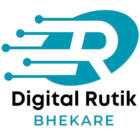1. Define Your Goals
- Brand Awareness: Increase the visibility of your brand.
- Engagement: Boost interactions with your audience through likes, comments, shares, etc.
- Lead Generation: Drive potential customers to your website or landing page.
- Sales: Directly promote products or services to drive sales.
- Customer Loyalty: Build a community and foster long-term relationships.
2. Know Your Audience
- Demographics: Identify your target audience’s age, gender, location, and interests.
- Behavioral Insights: Understand their online habits, what platforms they use, and the type of content they engage with.
- Buyer Personas: Create detailed profiles of your ideal customers to tailor your content and messaging.
3. Choose the Right Platforms
- Facebook: Great for a broad audience, community building, and ads.
- Instagram: Ideal for visual content, younger audiences, and influencer marketing.
- Twitter: Best for real-time updates, customer service, and trending topics.
- LinkedIn: Focused on B2B marketing, professional content, and networking.
- TikTok: Popular for short, viral video content among younger demographics.
- Pinterest: Good for niche markets, especially in fashion, food, and DIY.
4. Content Strategy
- Content Types: Use a mix of content types such as images, videos, infographics, blogs, polls, and stories.
- Content Calendar: Plan your posts in advance with a content calendar to ensure consistency and variety.
- Visual Branding: Maintain consistent branding elements like colors, logos, and fonts across all platforms.
- User-Generated Content: Encourage your followers to create content related to your brand and share it.
- Influencer Partnerships: Collaborate with influencers to reach a larger audience and build trust.
5. Create Engaging Content
- High-Quality Visuals: Invest in professional images and videos that reflect your brand’s quality.
- Captivating Captions: Write engaging captions that resonate with your audience, include CTAs, and encourage interaction.
- Hashtags: Use relevant hashtags to increase discoverability and reach a broader audience.
- Stories and Reels: Utilize short-form video content to showcase behind-the-scenes, product demos, or quick tips.
- Live Streams: Host live Q&A sessions, product launches, or tutorials to engage with your audience in real-time.
6. Paid Social Advertising
- Targeted Ads: Use social media ads to target specific demographics, interests, and behaviors.
- Custom Audiences: Retarget users who have interacted with your content or visited your website.
- Lookalike Audiences: Reach new people who are similar to your existing customers.
- Ad Formats: Experiment with different ad formats like carousel ads, video ads, and sponsored posts.
- Budget Management: Allocate your budget effectively based on your campaign goals and performance.
7. Community Management
- Engage with Followers: Respond to comments, messages, and mentions promptly to build relationships.
- Monitor Brand Mentions: Use tools to track mentions of your brand and engage with those conversations.
- Manage Feedback: Address both positive and negative feedback professionally to maintain a positive brand image.
8. Analyze and Optimize
- Track Metrics: Monitor key metrics such as reach, engagement rate, click-through rate, conversion rate, and ROI.
- Platform Analytics: Use built-in analytics tools like Facebook Insights, Instagram Analytics, and Twitter Analytics to gather data.
- A/B Testing: Test different content types, posting times, and ad creatives to see what works best.
- Adjust Strategy: Based on your analysis, refine your strategy to improve performance and achieve your goals.
9. Collaborate and Cross-Promote
- Influencers and Ambassadors: Partner with influencers or brand ambassadors to reach a larger audience.
- Cross-Promote: Share your content across multiple platforms and collaborate with other brands to tap into new audiences.
- User-Generated Campaigns: Create campaigns that encourage users to create and share content related to your brand, using a specific hashtag or challenge.
10. Stay Updated on Trends
- Social Media Trends: Stay informed about the latest trends in social media marketing and adapt your strategy accordingly.
- Platform Updates: Keep up with changes to algorithms, features, and best practices on each platform.
- Innovative Content: Experiment with new content formats and tools like augmented reality (AR), virtual reality (VR), or interactive content.
Example Social Media Campaign:
Goal: Increase brand awareness and engagement.
Platform: Instagram
Content:
- Daily Stories: Behind-the-scenes looks at your company culture.
- Posts: High-quality images of your products with engaging captions and CTAs.
- Reels: Short, fun videos highlighting product features or user testimonials.
- Hashtags: Use branded and trending hashtags to increase reach (#YourBrandName, #ProductFeature).
- Influencer Collaboration: Partner with a relevant influencer to create and share content about your product.
Paid Advertising: Run targeted ads with a focus on driving engagement and follower growth.
Analytics: Track metrics like follower growth, post engagement rates, and story views weekly. Adjust content based on performance insights.

